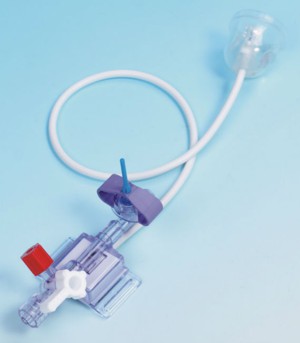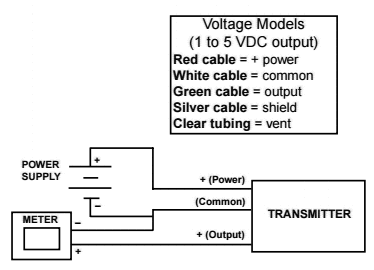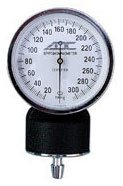See DAQ
See DAQ Wiring Box
We no longer use Pressure Transducers. We instead use simple digital manometers where necessary. This page is here for historical reference only.
A variety of companies make medical pressure transducers which all adhere to the same electronic standard: AAMI BP22.

Pressure range: -50 mmHg to 300 mmHg (5.8 psi)
Overpressure protection: -400 mmHg to +4000 mmHg (77psi)
Excitation voltage ~6 V
Output voltage approx 0 to 50mV at 300 mmHg
Output impedance <3000 ohm
Unfortunately, there is no cable standard, and each manufacturer is actually required to have their own proprietary connectors. Each cable normally requires a different proprietary connector on each end, and none of the necessary proprietary panel jacks for the monitor end are available anywhere for purchase. Our solution to the cable problem was to standardize on pressure transducers which come with the Abbott Medex connector, similar to a Smiths TranStar MX950 (and possibly Hospira Transpac). See patent 4825876. We specifically use these:
http://www.cablesandsensors.com/collections/ibp/products/abbott-medex-disposable-ibp-transducers
The Abbott Medex connector is RJ11 compatible, allowing great flexibility in cabling and panel jacks. We do not use proprietary medical cables.
Pins:
On a 4-pin RJ11 male plug, from the end, latch up, pin 1 is on the left.
| Pin | Color | Function | Wiring |
| 1 | black | signal + | NI9207+ |
| 2 | red | excitation + | 6V+ |
| 3 | green | excitation - | 6V- |
| 4 | yellow | signal - | NI9207- |
Cole Parmer
We gave up on these as unreliable. Signal bounced around by up to 30 mmHg.
Model 07356-00, sealed stainless steel, 15 psig, 1-5 V out, 10-30 V power.
Gauge pressure rather than absolute pressure, meaning that it's relative to atmospheric pressure.
The 15 psi works out to about 775.7 mmHg, close to 1 atm 760 mmHg
Output: 0 V when not powered, 1 V at zero mmHg, and 5 V at 775.7 mmHg
A metal luer lock adapter is screwed onto the end, onto which a liquid isolator is attached.

Analog Manometer
In many situations a simple analog manometer is used. This is always available as a backup in case the computer hardware or software is not functioning or is unavailable. Ours is an American Diagnostic Corp sphymomanometer gauge.

It should not be exposed to liquid, so the tubing is coiled about 4 times. As a result, any liquid can clearly be seen and blocked before it reaches the gauge. These are known to go out of calibration easily. If the needle is not exactly centered in the oval at zero, then you will need to add or subtract on the fly to obtain the most accurate numbers. Because of the mechanical limitations of the analog manometer, it is never used as the primary instrument during a case. Once calibrated, digital pressure transducers are more accurate.
